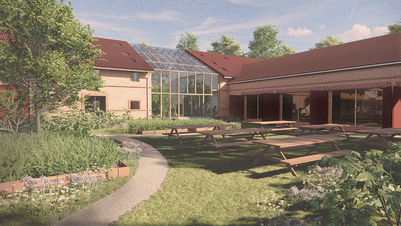

Where: Gameplay that Connects Players to Game Environments
With the development of the video game Where I set out to explore how gameplay as a medium can be used to facilitate interesting experiences of and interactions with virtual nature. Inspired by Game Theory ideas such as 'Regenerative Play' and the movement of 'Slow-Gaming', I suffused Where with several Affective Gameplay Systems that communicate a relationship between the player and their environment. This layer of reflective gameplay fits within and around Where's core novel gameplay of navigating the world using a static map and compass without the player position indicated and no other navigation aids, ultimately aiming to create a cohesive game experience in which the game environment is a foreground feature and not simply a beautiful backdrop to action.
Project Overview
The way in which nature, and our relationship with it, is represented can impart tacit ecological lessons that can shape how we as people view these domains in reality.
An increasingly present ‘lesson’ or theme in mass media (games being no exception) is that of an impending ecological and societal collapse. Though many of these games deal with this subject artfully, particularly with regards to the games’ narratives, there tends to be an unfortunate lack of imagination in designing the other more distinctive affordances of the medium to engage with these ideas. In other words, these game’s formal systems of gameplay and spatial design tend to continue to reflect anthropocentric and individualistic attitudes towards ecologies and environments - attitudes based on dominance or manipulation.
With Where the team and I set out to create a game that offered a glimpse of a different, more considered relationship with the environment.
Core Gameplay

Affective Gameplay Systems
I made it my goal to add to the core gameplay a fluid interactive experience in which the player’s moment-to-moment choices of gameplay would be responded to with sublime sound and visuals which would represent the character’s subjective, sensory experience within the game world. The hope with this approach is two fold: Both to ground the player in the character’s shoes but also to artfully clue the player to their place in the world with respect to the different biomes in a less overt way than is perhaps typical in other video games.
To achieve this, the first step was to create systems in the game’s code which would track these various states:
- Which Biome the player is currently in.
- How the Player is moving in the world.
- What is the Player doing? (i.e which Interactions, if any are they engaging in)
- The Player’s Progression in the Game’s Story
These parameters were then mapped to 3 Key Adaptive Systems which continuously adjust to the player’s journey:
- A Generative, Dynamic Soundscape
- Evolvable Environments
- Responsive Visual Effects
Det Kongelige Akademi understøtter FN’s verdensmål
Siden 2017 har Det Kongelige Akademi arbejdet med FN’s verdensmål. Det afspejler sig i forskning, undervisning og afgangsprojekter. Dette projekt har forholdt sig til følgende FN-mål












